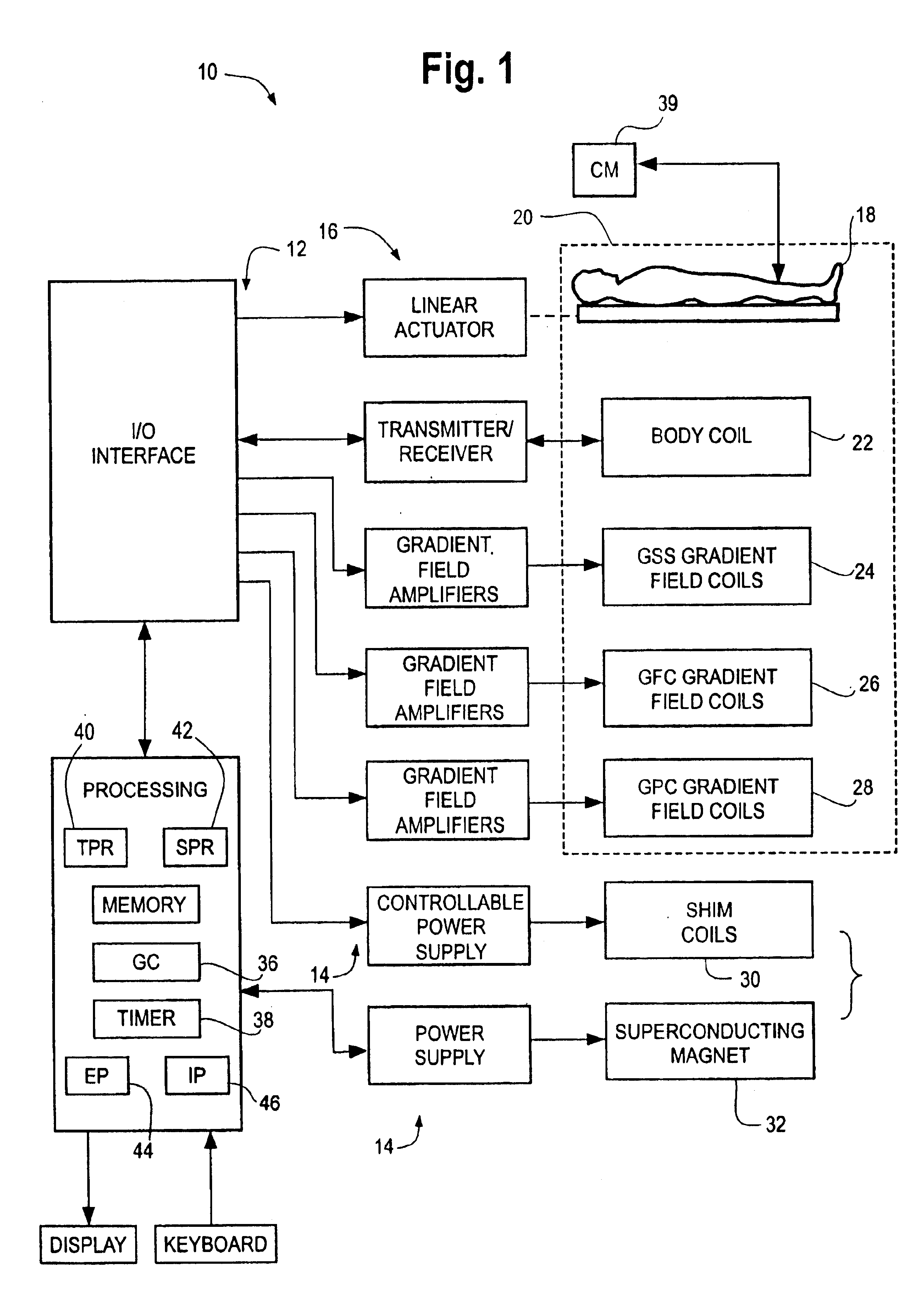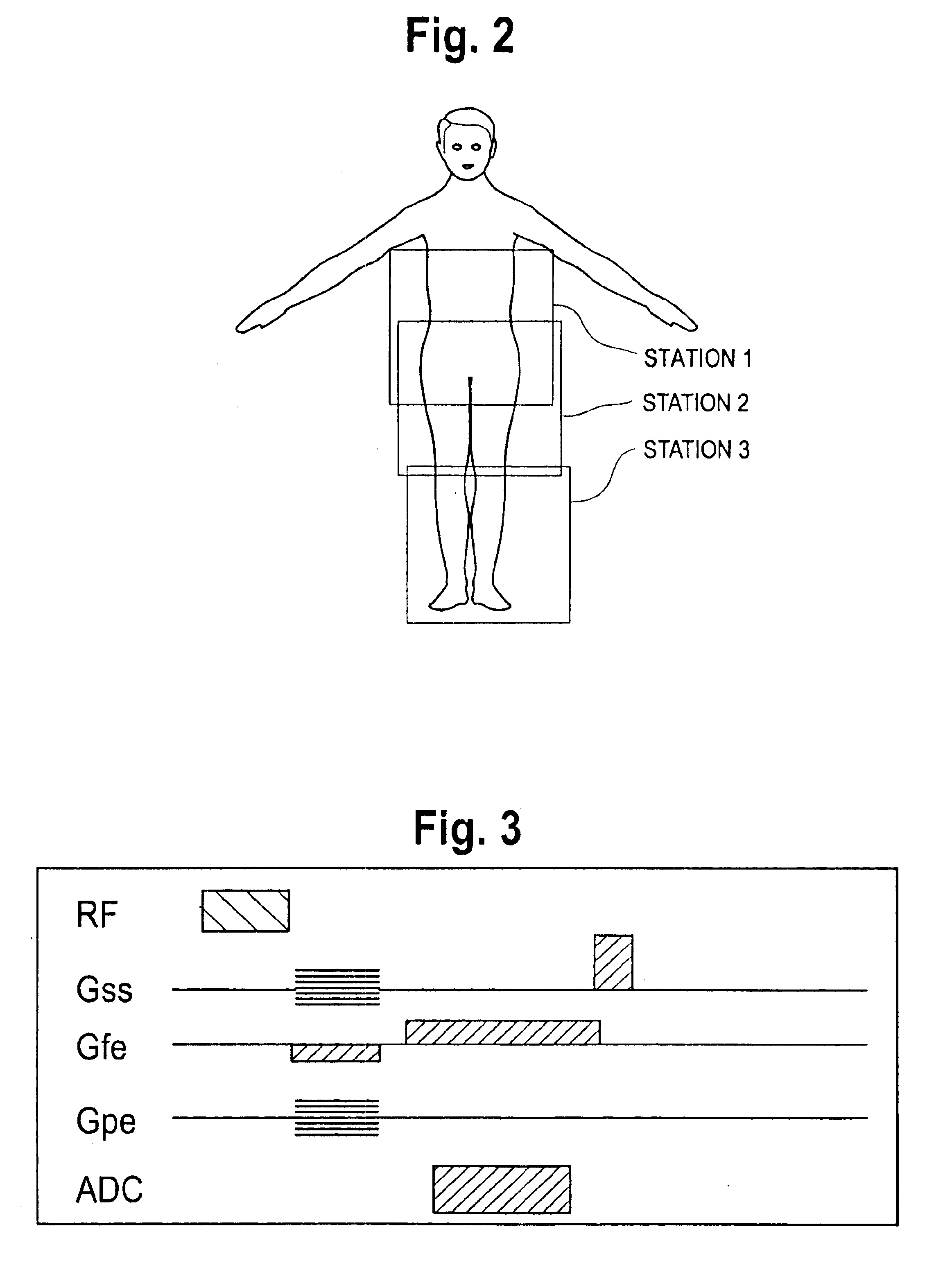Scoutless whole-body imaging with fast positioning
a whole-body imaging and positioning technology, applied in the field of computed tomography, can solve the problems of inability to increase blood flow during exercise, severe consequences including amputation or death, and atherosclerosis, which is a major problem in the aged population, and achieves the effect of improving blood flow during exercis
- Summary
- Abstract
- Description
- Claims
- Application Information
AI Technical Summary
Problems solved by technology
Method used
Image
Examples
Embodiment Construction
[0014]FIG. 1 is a block diagram of a magnetic resonance imaging system 10 under an illustrated embodiment of the invention. While the system 10 is amenable to a number of different modes of use, one illustrated method provides faster contrast-enhanced multi-station magnetic resonance angiography (MRA), that eliminates the need for the acquisition of scout images and / or manual positioning of the patient for collecting specific imaging volumes. As used herein, the term “scout images” refers to coarse images collected specifically for the purpose of aligning imaging volumes among imaging stations.
[0015]With conventional moving table MRA, MRA image data is collected at each of a number (two or more) of imaging Stations (FIG. 2) in order to follow the passage of an intravenously administered contrast agent. Because the data are typically acquired over a volume of finite thickness that is smaller than the thickness of the body part, the three-dimensional (3D) imaging volume must be carefu...
PUM
 Login to View More
Login to View More Abstract
Description
Claims
Application Information
 Login to View More
Login to View More - Generate Ideas
- Intellectual Property
- Life Sciences
- Materials
- Tech Scout
- Unparalleled Data Quality
- Higher Quality Content
- 60% Fewer Hallucinations
Browse by: Latest US Patents, China's latest patents, Technical Efficacy Thesaurus, Application Domain, Technology Topic, Popular Technical Reports.
© 2025 PatSnap. All rights reserved.Legal|Privacy policy|Modern Slavery Act Transparency Statement|Sitemap|About US| Contact US: help@patsnap.com



